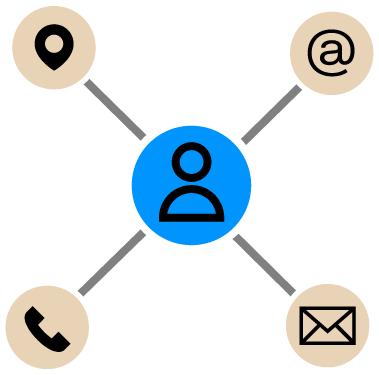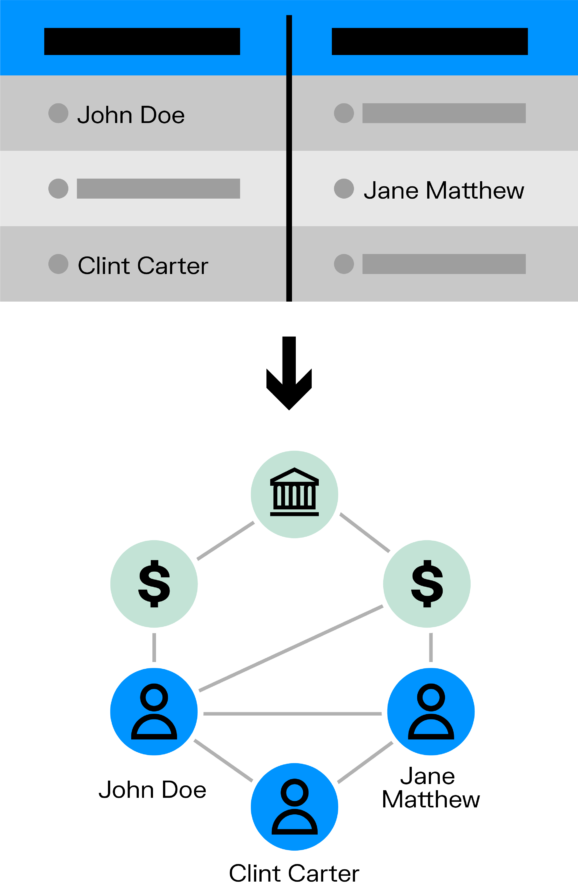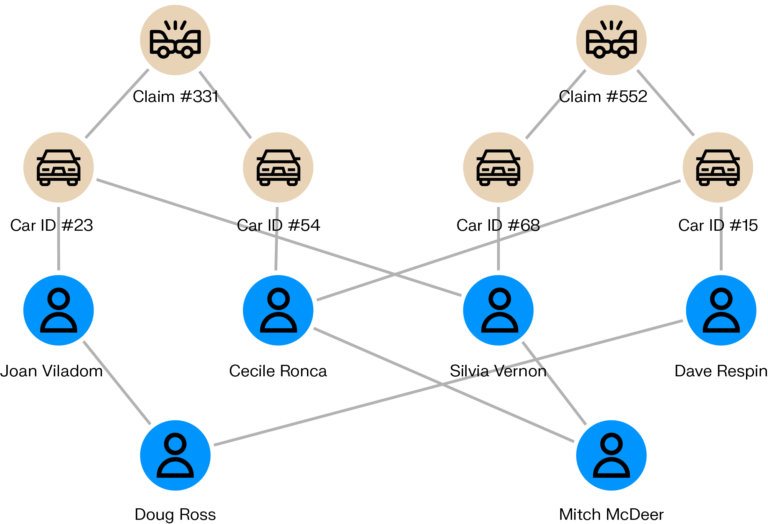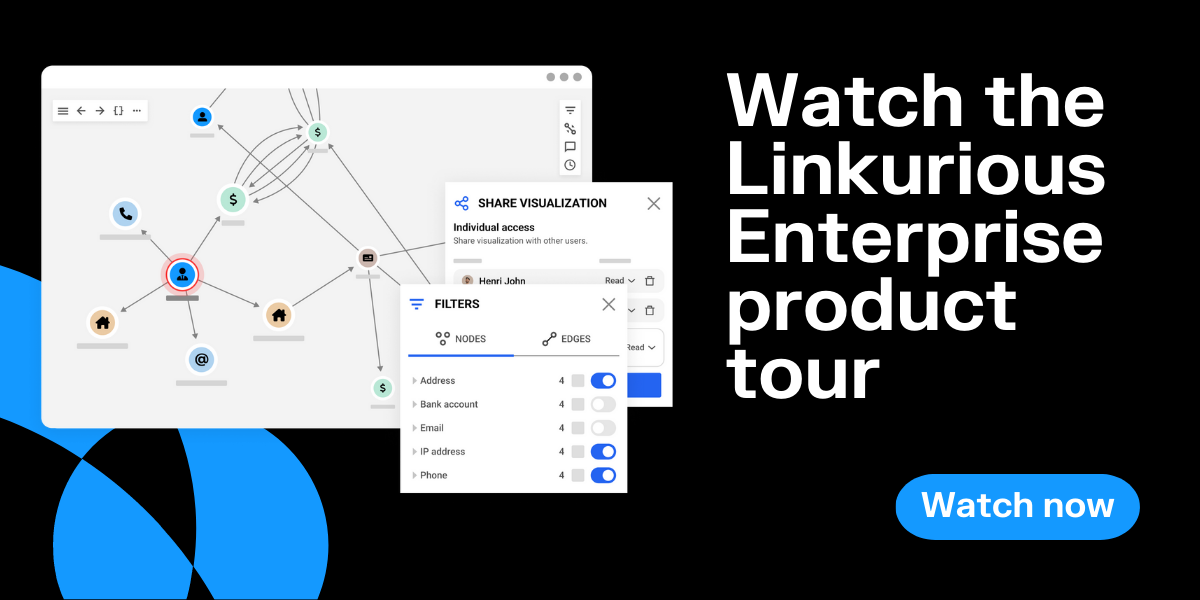Businesses today are relying on more and more data for their operations and decision making. The data they depend on is also becoming increasingly complex, with all kinds of dependencies within it.
In this context, more organizations are turning to new analytics techniques like graph analytics or link analysis.
Link analysis helps connect the dots within your data to gain previously unseen insights. No matter the industry, understanding hidden connections and relationships can help drive better business decisions.
This article explores what link analysis is and what the advantages are of using it. We’ll also look at a real-world example of how link analysis can be applied in the context of fraud detection.
Link analysis is an analytics technique used to identify, evaluate and understand the connections within data. The data to perform link analysis is stored in a graph database and then is displayed as a graph visualization, also called a network visualization.
Individual data points in a graph data model are represented by nodes. These entities are connected with edges - also called relationships - that represent the links between any nodes.
Both nodes and edges can have properties that store key information. For a node, this might be the name of a person or a business. For an edge, it could be the amount of a transaction.

By representing graph data as a network, it becomes much easier to look for information within that data, and spot important trends, patterns, or anomalies.
Traditional databases, as opposed to graph databases, store data in rows and columns. It’s easy to search for or verify simple information.
But when you’re working with large datasets or multiple data sources, the relationships within the data can be highly complex. And the more complex the data, the more difficult and time consuming it becomes to run analysis in a traditional database. Traditional analytics are also not designed to analyze the relationships within the data.

With graph data and link analysis, on the other hand, data from multiple sources is represented all at once. The connections between entities are treated as first-class citizens, so you can quickly understand what data is connected, and what the nature of those connections is.
These characteristics of link analysis make it an especially advantageous solution for organizations that need to understand the relationships within their data. It comes with several key benefits.
The human brain can process visual information many times faster than written or numerical information. By displaying your data as a visual network, link analysis can enable you to find exactly the information you need in a matter of seconds.
Link analysis can display and analyze huge amounts of data from multiple sources. Even when the quantity of data is very large, querying data stored in a graph is quick, enabling you to scale any project.
Displaying data as a network presents an easy and intuitive way for even non-technical users to understand and explore complex connections.
Link analysis provides a powerful tool for identifying patterns and connections that might be difficult - or even impossible - to detect using other methods. By analyzing the relationships between entities, analysts can gain insights into complex networks, surfacing hidden insights or anomalies, or identifying areas for further investigation.
Here are some common use cases for link analysis.
In a law enforcement context, agencies can use link analysis to identify connections between individual entities or organizations involved in criminal activities: drug trafficking, organized crime, etc.
Using link analysis, investigators can identify individuals who are connected to multiple crimes, for example, or surface connections between criminal suspects and their accomplices.
Cybersecurity analysts need to be able to quickly identify security threats and risk to effectively protect their organization.
Link analysis can help them identify patterns of behavior that may indicate suspicious activity. It can be used for example to identify connections between malicious domains or IP addresses or to spot patterns of behavior that indicate phishing or another type of cyber attack.
Intelligence agencies commonly use link analysis to identify connections between individuals or organizations involved in criminal or terrorist activities.
Investigators may use link analysis to flag individuals who are connected to known participants in a terrorist organization or to spot connections between criminals and their associates.
Let’s take a deeper dive into the use case of fraud detection to see in detail how link analysis can be applied.
Let’s look at one use case where link analysis performs especially well to understand how this type of analytics can be applied.
Fraud is an increasingly complex problem for financial institutions, insurers, and other businesses to manage. Fraudsters often operate in networks that resemble professional organizations. Oftentimes they work across borders. Fraudsters are also experts in evading prevention and detection systems, quickly evolving their criminal techniques to get around new prevention tools.
The data analysts use to detect possible cases of fraud is therefore full of complexity, and comes from multiple sources. Link analysis enables you to visualize and explore all that data in one place. Patterns indicative of fraud become much more apparent.
Take the example of fraudulent car accident claims filed with an insurance company. Scaling the fake car accidents requires multiple policyholders, multiple cars and multiple car passengers.
Link analysis can help identify if within an insurance company’s client database several people are interconnected across cars, individuals, repair shops or claims. The larger the network, the more likely that fraud is going on.

You can also see individuals who may be at a high risk for fraud at a glance. Say for example that your bank is onboarding a new customer. Everything about her seems normal. But link analysis shows you that she’s connected to a known fraudster by an IP address. Traditional detection systems may have missed this red flag.
Fraud detection is just one example of link analysis applications. This analytics technique can also be applied with impressive results to supply chain, IT, intelligence, cyber security, and many other use cases. Learn more about link analysis and graph analytics use cases.
Link analysis FAQ
What is link analysis?
How does link analysis represent data in a graph data model?
How do you perform link analysis?
What distinguishes link analysis from graph analysis?
What are the benefits of link analysis?
How is link analysis used in intelligence?
Linkurious is a software company providing technical and non technical users alike with the next generation of detection and investigation solutions powered by graph technology. Simply powerful and powerfully simple, Linkurious Enterprise helps more than 3000 data-driven analysts or investigators globally in Global 2000 companies, governmental agencies, and non-profit organizations to swiftly and accurately find insights otherwise hidden in complex connected data so they can make more informed decisions, faster.
